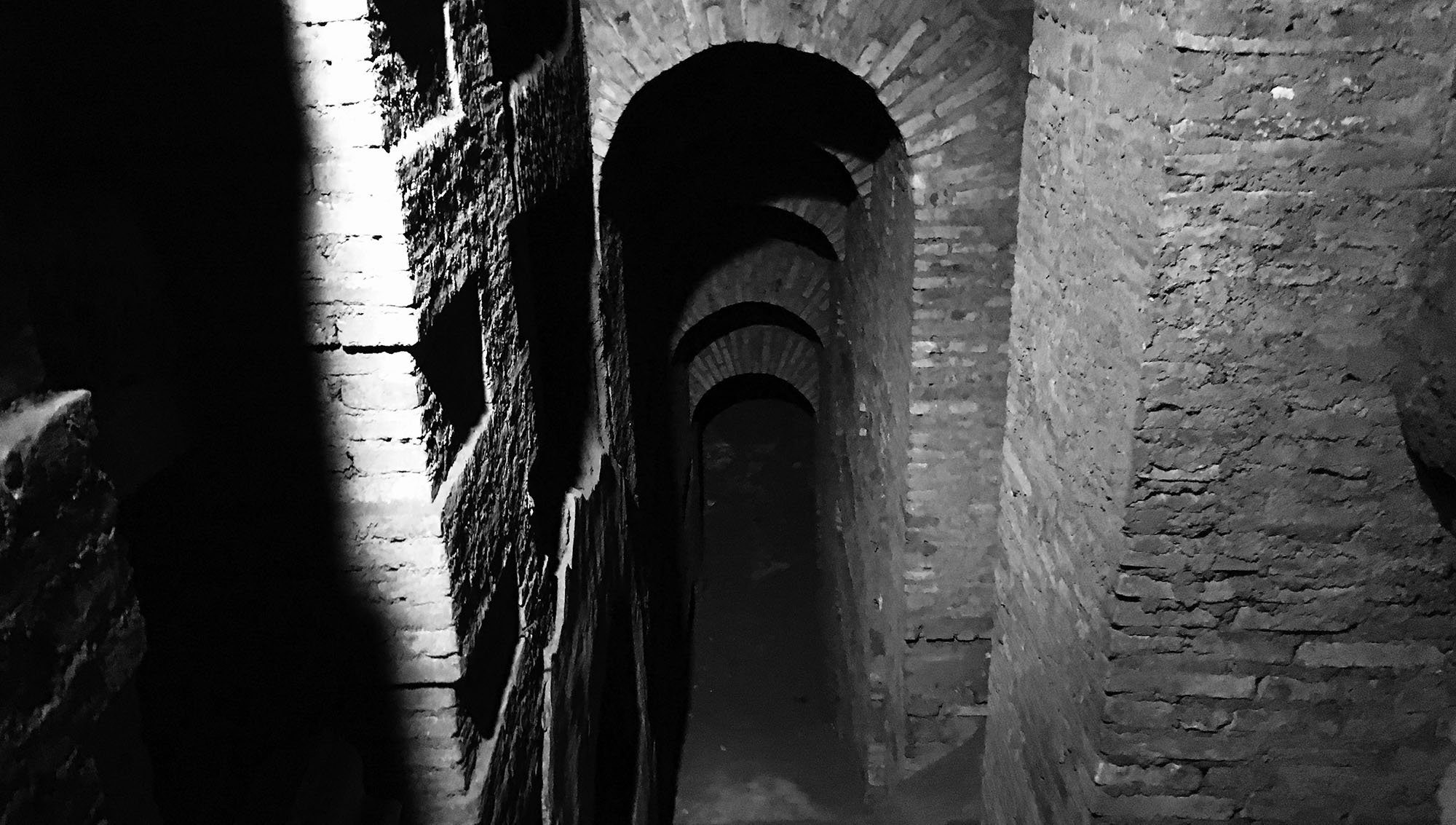DISCUSSING:
In the Shadow of the Spire – Session 23B: Binding Foul and Fair
“Well, the book should tell us more,” Ranthir said, and picked it up. He flipped it open… and the pages seemed to blur before his eyes, forming a black maw that seemed to open inside his very mind… threatening to overwhelm him… to swallow his very mind…
Ranthir jerked the book away, slamming it shut and throwing it onto the table.
“What is it? What’s wrong?”
Ranthir rubbed his forehead. His thoughts seemed blurred. The edge of his intellect dulled. “The book… the book betrayed me!”
I often talk about how one of the unique strengths of the dungeoncrawl structure is the way in which it firewalls individual rooms: If you’re a GM – particularly a new GM – you don’t have to keep an entire adventure scenario in your head. You only have to think about the room the PCs are currently standing in. All the information you need right now almost certainly fits on a single piece of paper, and you don’t have to worry about anything else until the PCs choose an exit and go to the next room.
It’s the equivalent of juggling one ball.
This also extends to creating the dungeon scenario in the first place: In its most inchoate form, the dungeon is made up of entirely independent rooms. The new GM can fill a dungeon room with fun stuff and then move on to filling up the next room without any concern for what they put in the first room.
Once you’re no longer a beginning GM, though, you’re going to start using techniques that break down this firewall. You’re not going to completely eschew the advantages of the clearly defined room key (no reason to throw the baby out with the bathwater), but you will slowly stop thinking about the dungeon only one room at a time and start adding extra dimensions and complexity to your dungeon scenarios.
You’re going to start juggling multiple balls at the same time.
One such technique is the adversary roster: Instead of keying encounters to specific rooms, adversary rosters make it relatively easy for the GM think about and actively play the inhabitants of a dungeon as they move around the location, living their lives and responding to the incursions of the PCs.
Another technique are dungeon clues. To generalize, a dungeon clue is information in one room of a dungeon which influences or determines the PCs’ actions in a different room.
 Some of these clues will likely be quite straightforward: For example, the key in Room 11 that opens the door in Area 41.
Some of these clues will likely be quite straightforward: For example, the key in Room 11 that opens the door in Area 41.
Other clues, however, will be complicated, perhaps requiring a series of revelations gleaned from clues in multiple locations throughout the dungeon before the final solution can be found. You can see an example of this here in Session 23, as the PCs piece together the clues that will let them locate the broken halves of the spiral contrivance.
“If the key is in the square tower and it requires a ladder to reach the secret entrance, maybe that entrance isn’t on the wall of the tower – maybe it’s under the tower.”
They returned down to the large, empty room on the fifth floor of the tower. “We should be directly beneath the tower here,” Ranthir said.
Tee floated up to the ceiling and quickly found a bit of false plaster. Scraping that aside with one of her dragon-hilted daggers, she revealed a small keyhole. She took out the key she had found in the nook below the ruined garden and found that it was a perfect fit.
A particularly effective technique is to design your dungeon clues so that the PCs are forced to crisscross the dungeon — gaining information in Area A that takes them to Area B, before sending them back to Area A to complete the sequence. These types of interactions help to transform the dungeon from a linear experience to a multi-dimensional one, in which expertise and knowledge gained from one traversal of the dungeon become rewarding when the players revisit those areas a second time.
In sufficiently complex dungeon scenarios, you can have multiple enigmas featuring overlapping patterns of dungeon clues in play at the same time. This creates navigational interest in the dungeon as the players now have to figure out their own priorities and the routes that proceed from those priorities.
The last thing to note is that dungeon clues frequently aren’t necessary to successfully complete a scenario. For example, the PCs could have found the pieces of the spiral contrivance without necessarily obtaining or figuring out all the clues. If the revelation indicated by your dungeon clues is necessary for the scenario, though, you’ll want to remember the Three Clue Rule.
THE DYNAMIC CYCLE
For the GM, dungeon clues usually aren’t something they need to think about too much while running the game (although for sufficiently complicated scenarios it might involve tracking a revelation list), but that’s obviously because the clues are getting baked in during prep. Players, on the other hand, will be actively engaged with these clues — collecting them, thinking about them, trying to figure them out — during play.
In fact, all of these techniques — adversary rosters, dungeon clues, etc. — don’t just break down the GM’s firewall. They also force the players to stop thinking about things one room at a time and instead start thinking about the dungeon as a whole. In other words, the players will stop thinking only tactically about their immediate circumstances and start thinking strategically about the broader scenario.
Once the players have been nudged in this direction, you’ll discover that their strategic consideration of the dungeon will actually feed back into the scenario itself, creating dynamic interactions which were never explicitly part of your prep: The deliberately placed dungeon clues will get them thinking about how Room 11 and Room 33 relate to each other, for example. But now that they’re thinking like that, they’ll also think about:
- Using a passwall spell to move from Room 14 to Room 22.
- Tricking the goblins in Rooms 9 thru 12 into attacking the ogre in Room 41.
- Scavenging alchemist’s fire from the traps in the lower hallways to destroy the cursed tapestries in Room 42.
This dynamic play on the part of the players will, in turn, give you the opportunity of rising to the challenge and finding more ways to actively play the scenario in order to respond to them.
NEXT:
Campaign Journal: Session 23C – Running the Campaign: Dungeon Cycles
In the Shadow of the Spire: Index













I feel this is exactly how games like Legend of Zelda, Metroid, and even Dark Souls make their “dungeons” interesting. I’ve always felt d&d dungeon crawling never felt as interesting as those games, and I think this gets at why. Will definitely try to incorporate it more into my prep.
Would this be an example of what you’re talking about? I once ran a 3e module which involved exploration of a wizard’s tower. The tower had a central column, and on most floors the column was surrounded by a dial with geometric shapes marked on it (circle, triangle, square and star). Turning the dial would lock/unlock certain doors as well as activating traps on the floor below.
On the 2nd floor, instead of a dial, the column contained a vault which was unlocked by turning the dials on the other four floors to the correct settings. (There were also a couple of notes the PCs could find which gave clues as to which settings did what.)